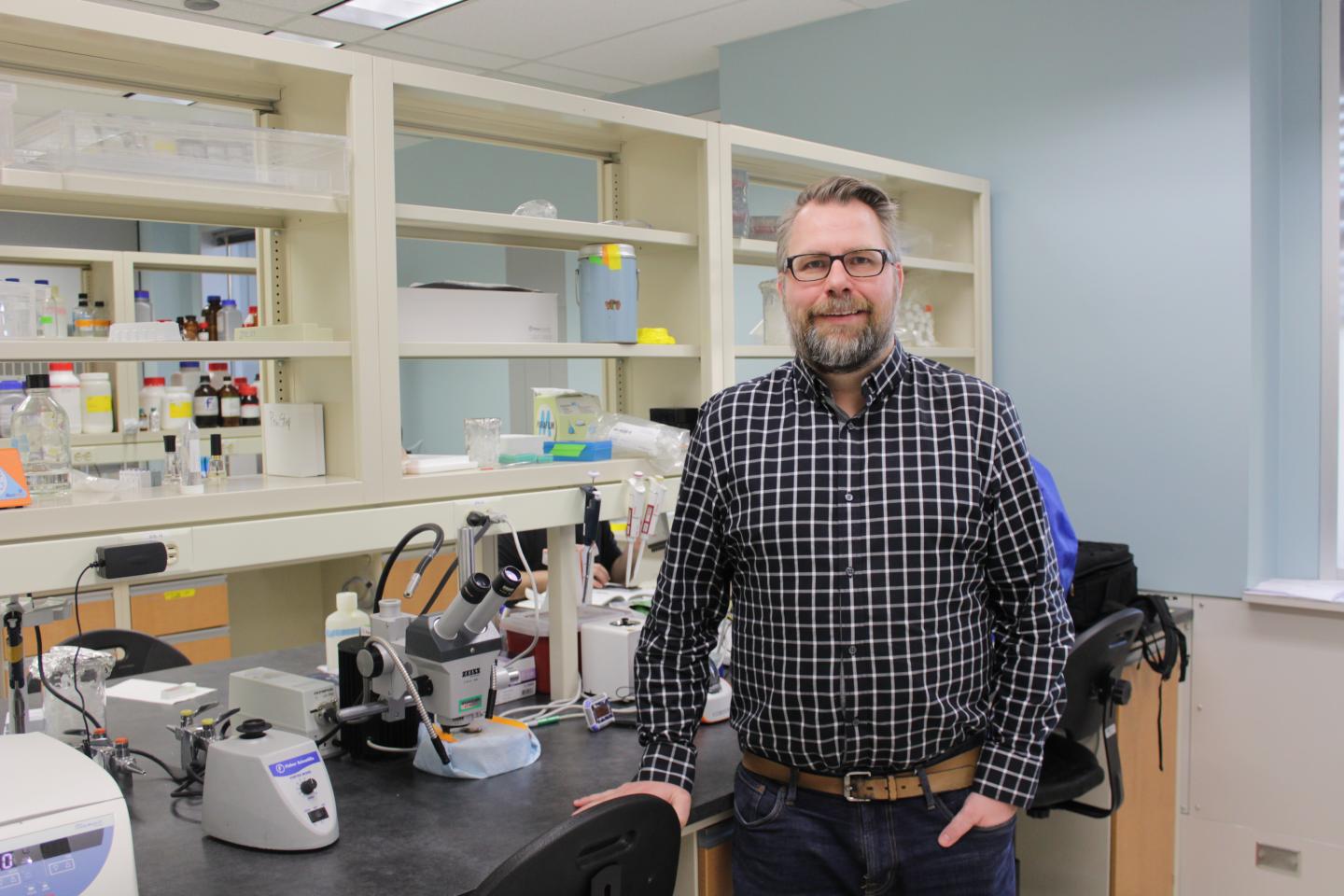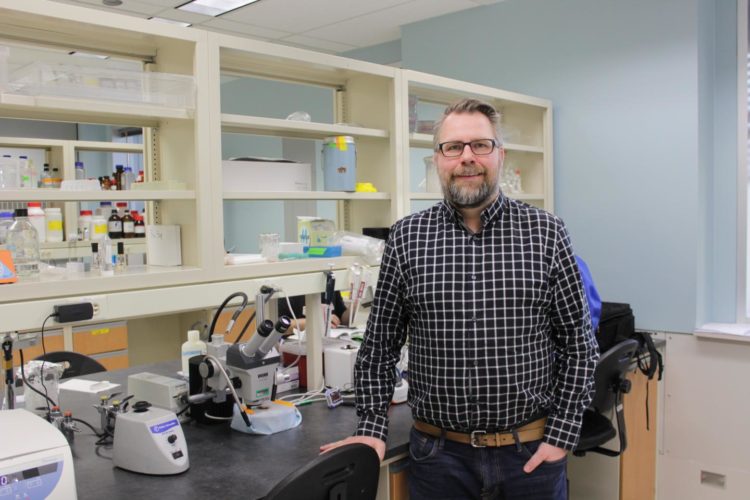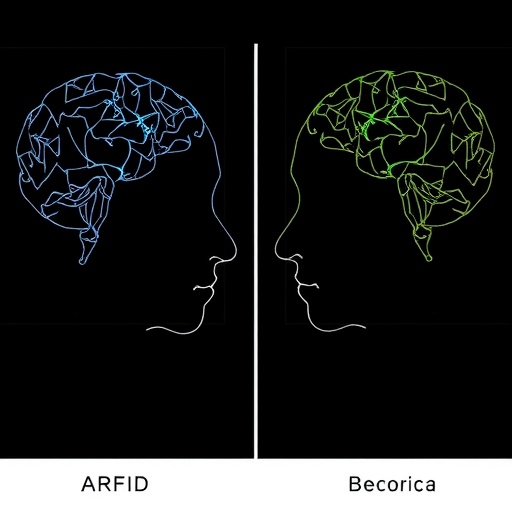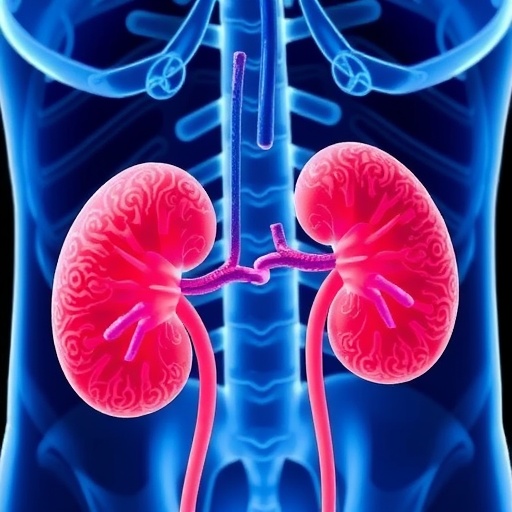University of Alberta researcher discovers that immune cells in the brain and central nervous system interfere with those in the blood when a nerve is damaged

Credit: Ryan O’Byrne
An unexpected research finding is providing new information that could lead to new treatments of certain neurological diseases and disorders, including multiple sclerosis, Alzheimer’s disease and spinal cord injury.
University of Alberta medical researcher Jason Plemel and key collaborators Joanne Stratton from McGill University, and Wee Yong and Jeff Biernaskie from the University of Calgary, found that immune cells in our brain and central nervous system, called microglia, interfere with blood immune cells called macrophages.
This discovery suggests that the immune cells in our brain and central nervous system are preventing the movement of the blood immune cells.
“We expected the macrophages would be present in the area of injury, but what surprised us was that microglia actually encapsulated those macrophages and surrounded them–almost like police at a riot. It seemed like the microglia were preventing them from dispersing into areas they shouldn’t be,” said Plemel.
“We’re not sure why this happens. More research is required to answer that question,” he added.
The central nervous system contains both white and grey matter. White matter is composed of nerve fibres covered by myelin, which speeds up the signals between the cells and allows the brain to quickly send and receive messages. In various neurological diseases and disorders, the myelin becomes damaged, exposing the nerves to deterioration.
“We found that both the immune cells that protect the central nervous system, microglia, and the immune cells of the peripheral immune system, macrophages, are present early after demyelination, and microglia continue to accumulate at the expense of macrophages.
“When we removed the microglia to understand what their role was, the macrophages entered into uninjured tissue,” explained Plemel, who is also a member of the Neuroscience and Mental Health Institute.
“This suggests that when there is injury, the microglia interfere with the macrophages in our central nervous system and act as a barrier preventing their movement.”
An opposite effect happens when a nerve is injured elsewhere in the body. For example, when a nerve is injured in your leg, the macrophages accumulate but the other resident immune cells do not, making the microglia’s response in the central nervous system unique.
While there are several differences in the operation and origin of microglia and macrophages, it has historically been impossible to tell the two types of cells apart.
It is this ability to differentiate between the two that may lead to an increased understanding of how each specific type of immune cell responds to demyelination, and as a result, lead to the development of new techniques and treatments that can combat and repair the damage being caused.
Using the same technique, Plemel and his collaborators also discovered there was more than one type of microglia responding to demyelination.
“The indication of at least two different populations of microglia is an exciting confirmation for us,” said Plemel. “We are continuing to study these populations and hopefully, in time, we can learn what makes them unique in terms of function. The more we know, the closer we get to understanding what is going on (or wrong) when there is neurodegeneration or injury, and being able to hypothesize treatment and prevention strategies.”
###
The study, “Microglia Response Following Acute Demyelination Is Heterogeneous and Limits Infiltrating Macrophage Dispersion,” was published in Science Advances.
Media Contact
Ross Neitz
[email protected]
780-492-5986
Original Source
https:/
Related Journal Article
http://dx.





